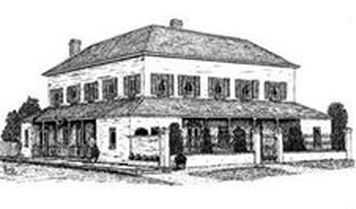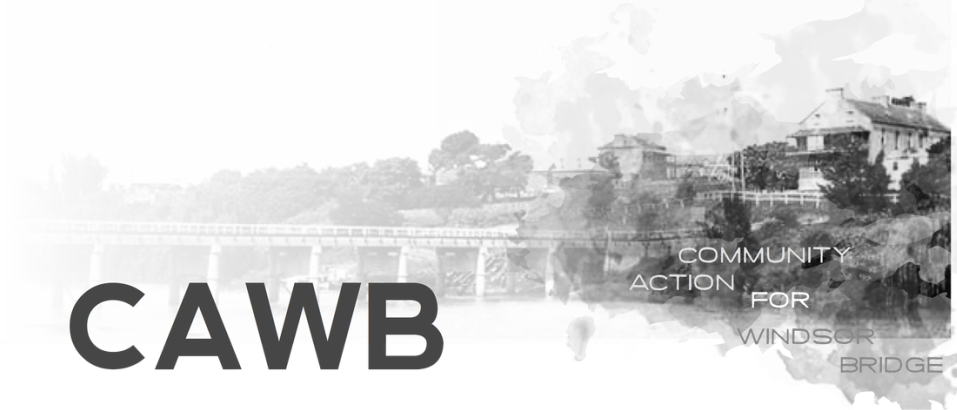
The Macquarie Arms is the most iconic and oldest building in Thompson Square. It owes it’s existence to two men – Governor Lachlan Macquarie who ordered it to be built and Richard Fitzgerald, the man who carried out that order.
As Fitzgerald arrived in Australia in 1791 as a convict and rose in the colony to become a wealthy and respected citizen, his life in this country runs akin to that of Andrew Thompson, after whom the Square was named.
After his arrival it was noted that Fitzgerald showed ‘remarkable activity and regular conduct’ ( as John Macarthur stated) and since he had some knowledge of agriculture, successive governors gave him increasing responsibilities connected with the public farms. He was appointed superintendent of convicts at Toongabbie in 1792 and in 1798 Gov. John Hunter made him superintendent of public agriculture. His own assets were growing quickly and by 1802 he held 350 acres; two years later he had 90 acres under wheat, 340 sheep and an increasing number of other livestock. Due to the requirements of tending to all these assets, Gov. King dismissed him from his public duties.
Although Fitzgerald had originally sided with the Macarthur factor which opposed Gov. Macquarie’s egalitarian approach, he quickly became a close friend, trusted agent and protégé of the governor. Macquarie appointed him storekeeper at the Hawkesbury and superintendent of stores in 1811.
Macquarie recognised his ability and praised his “zeal, vigilance and integrity” of this “most honest upright good man”. He invited him to Government House and stayed with him when visiting Windsor. There in 1810 he was ordered to build a “handsome commodious inn”, was superintendent of stores and 4 years later was put in charge of the commissariat and of all public works, so that in due course he supervised the building of St Matthew’s.
Macquarie gave Fitzgerald a large allotment in the Square on the “expressed condition of his building immediately thereon a handsome commodious inn of brick or stone and to be at least 2 stories high”. ( Macquarie Journal of his Tours 12th Jan. 1811 ).
From the Sydney Gazette, July 1815 we have the following report :-
“That spacious and commodious new Inn at Windsor called The Macquarie Arms was opened by the Governor on Wed.26th, when His Excellency entertained at dinner the Magistrates and other Principal Gentlemen residing at Windsor, and in that neighbourhood. Mr Ranson, who has taken on himself the duties of the Innkeeper is, from his experience in the avocation, thoroughly competent to the undertaking. Its necessity has been long manifest, as there was no house of public reception at Windsor capable of accommodating large and genteel companies; whereas the Macquarie Arms, from its extent, plan of building and adequate number of apartments, will be doubtless found worthy of the most liberal patronage and support”.
Fitzgerald was the owner of the Macquarie Arms and he resided in the cottage built beside the Inn and when his only surviving son, Robert, occupied the house the sound of revelry was often heard at night.
The Inn was leased on January 27, 1835 to the Governor for 5 years for a mess-house for the officers of the 50th Regiment.
Richard Fitzgerald was a very socially responsible and philanthropic gentleman. He was a wealthy man, leaving an estate valued at 34,000 Pounds. He was a supporter of many institutions such as the Church of England and the Roman Catholic Church as well as the Hawkesbury Benevolent Institution. He treated the Aboriginals with great civility and humanity. He was well regarded by his servants and held equally in high regard by both Macarthur and Macquarie which tells us much about his charm, tact,wisdom and great abilities.
He, like Andrew Thompson, was one of the most remarkable men to settle this land.
The male line bearing his name died out but he left many descendants through his granddaughters.
Can Anybody Help Shed Some Light on the Following Mystery??
In an article in the Windsor Richmond Gazette in 1955, Mr D.G. Bowd ( Chairman of the Hospital Board ), states that a portrait of Richard Fitzgerald, previously owned by the Hospital had gone astray. It, among other portraits, had “gone missing”. Fitzgerald had been Chairman of the Hospital Board 1837 – 1840 and he had left the Hospital a benefaction of 6,500 Pound.
Bowd states that he would like to see another portrait of him enlarged from a printed reproduction of the earlier one – secured and displayed in the office. This was agreed upon along with a plan to provide legends for the portraits.
I wonder if this ever happened? I have not been able to find an image of Richard Fitzgerald – was this the only one? Did Bowd suspect what had happened to the missing portraits? What happened to the printed reproduction?
As Fitzgerald arrived in Australia in 1791 as a convict and rose in the colony to become a wealthy and respected citizen, his life in this country runs akin to that of Andrew Thompson, after whom the Square was named.
After his arrival it was noted that Fitzgerald showed ‘remarkable activity and regular conduct’ ( as John Macarthur stated) and since he had some knowledge of agriculture, successive governors gave him increasing responsibilities connected with the public farms. He was appointed superintendent of convicts at Toongabbie in 1792 and in 1798 Gov. John Hunter made him superintendent of public agriculture. His own assets were growing quickly and by 1802 he held 350 acres; two years later he had 90 acres under wheat, 340 sheep and an increasing number of other livestock. Due to the requirements of tending to all these assets, Gov. King dismissed him from his public duties.
Although Fitzgerald had originally sided with the Macarthur factor which opposed Gov. Macquarie’s egalitarian approach, he quickly became a close friend, trusted agent and protégé of the governor. Macquarie appointed him storekeeper at the Hawkesbury and superintendent of stores in 1811.
Macquarie recognised his ability and praised his “zeal, vigilance and integrity” of this “most honest upright good man”. He invited him to Government House and stayed with him when visiting Windsor. There in 1810 he was ordered to build a “handsome commodious inn”, was superintendent of stores and 4 years later was put in charge of the commissariat and of all public works, so that in due course he supervised the building of St Matthew’s.
Macquarie gave Fitzgerald a large allotment in the Square on the “expressed condition of his building immediately thereon a handsome commodious inn of brick or stone and to be at least 2 stories high”. ( Macquarie Journal of his Tours 12th Jan. 1811 ).
From the Sydney Gazette, July 1815 we have the following report :-
“That spacious and commodious new Inn at Windsor called The Macquarie Arms was opened by the Governor on Wed.26th, when His Excellency entertained at dinner the Magistrates and other Principal Gentlemen residing at Windsor, and in that neighbourhood. Mr Ranson, who has taken on himself the duties of the Innkeeper is, from his experience in the avocation, thoroughly competent to the undertaking. Its necessity has been long manifest, as there was no house of public reception at Windsor capable of accommodating large and genteel companies; whereas the Macquarie Arms, from its extent, plan of building and adequate number of apartments, will be doubtless found worthy of the most liberal patronage and support”.
Fitzgerald was the owner of the Macquarie Arms and he resided in the cottage built beside the Inn and when his only surviving son, Robert, occupied the house the sound of revelry was often heard at night.
The Inn was leased on January 27, 1835 to the Governor for 5 years for a mess-house for the officers of the 50th Regiment.
Richard Fitzgerald was a very socially responsible and philanthropic gentleman. He was a wealthy man, leaving an estate valued at 34,000 Pounds. He was a supporter of many institutions such as the Church of England and the Roman Catholic Church as well as the Hawkesbury Benevolent Institution. He treated the Aboriginals with great civility and humanity. He was well regarded by his servants and held equally in high regard by both Macarthur and Macquarie which tells us much about his charm, tact,wisdom and great abilities.
He, like Andrew Thompson, was one of the most remarkable men to settle this land.
The male line bearing his name died out but he left many descendants through his granddaughters.
Can Anybody Help Shed Some Light on the Following Mystery??
In an article in the Windsor Richmond Gazette in 1955, Mr D.G. Bowd ( Chairman of the Hospital Board ), states that a portrait of Richard Fitzgerald, previously owned by the Hospital had gone astray. It, among other portraits, had “gone missing”. Fitzgerald had been Chairman of the Hospital Board 1837 – 1840 and he had left the Hospital a benefaction of 6,500 Pound.
Bowd states that he would like to see another portrait of him enlarged from a printed reproduction of the earlier one – secured and displayed in the office. This was agreed upon along with a plan to provide legends for the portraits.
I wonder if this ever happened? I have not been able to find an image of Richard Fitzgerald – was this the only one? Did Bowd suspect what had happened to the missing portraits? What happened to the printed reproduction?


